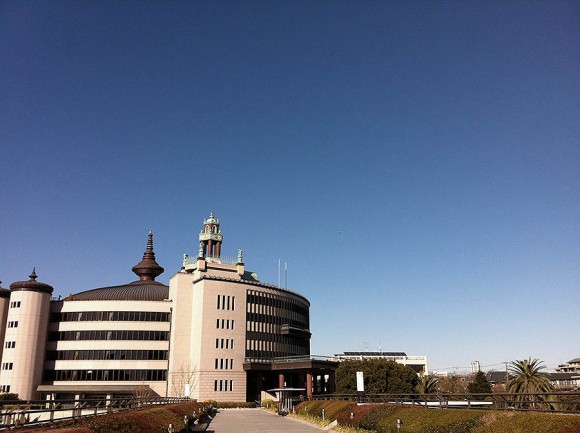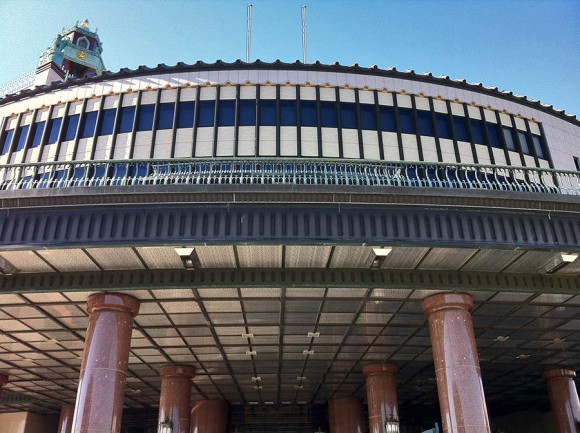Rissho Kosei Kai is another one of Japan’s new religions. Like the Reiyukai and Soka Gakkai, its membership rose astronomically after WWII. Today, the Buddhist lay movement has about two million adherents. At the time of its fastest growth in the sixties, the group built its impressive headquarters in Tokyo’s Suginami ward, west of Shinjuku station.
Many buildings in the vicinity belong to the group, yet two of them stand out for their sheer size. On one side of the road from Nakanofujimicho station stands the Fumon Hall, built in 1970 to act as a convention and event center.
It’s big: seating up to 5,000 people, it is only open to the public occasionally. Other than regular metal ornaments of floral shape, the hall looks like a bit of a container like concrete structure. Its somewhat surprising elliptical shape is visible from some angles and above:
The other main building in the complex is the Great Sacred Hall, finished earlier than the Fumon Hall (1964), but renovated extensively since then. It has seating space for a few thousand people, too. Both buildings are connected by a wide boulevard bridge that spans the street and is lined by pretty trees.
The Great Hall looks more impressive on the inside than outside, where various elements are competing with one another to take away a feeling of awe and replace it with a slight sense of confusion: there is a stupa looking element on top of the dome, something resembling a clock tower as well as a broad round front by the entrance.

As said, the whole area is home to many other buildings of the faith. Upon walking back to the train station, I found the nursing school to be quite a sight:







To the best of your knowledge, in what way does these buildings express the belief system of this particular movement?
Schwartz – that’s a very good question you’re asking that I can’t fully answer yet. The book I’m planning will explore this in more expert detail. I think these new religious groups’ buildings are all quite “extravagant” perhaps because they all try to reinvent symbolic language to distance themselves from the old, more established faith groups. They are also manifestations of the groups’ determination to stay, i.e. to create monuments for eternity. More to come!